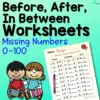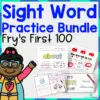The month of October is the National Fire Prevention Month. During this time, children are taught about fire safety to increase their awareness about the dangers when a fire breaks out and help prevent any fire-related accidents.
Check out our ten practical fire safety activities that are timely and relevant for the little ones.
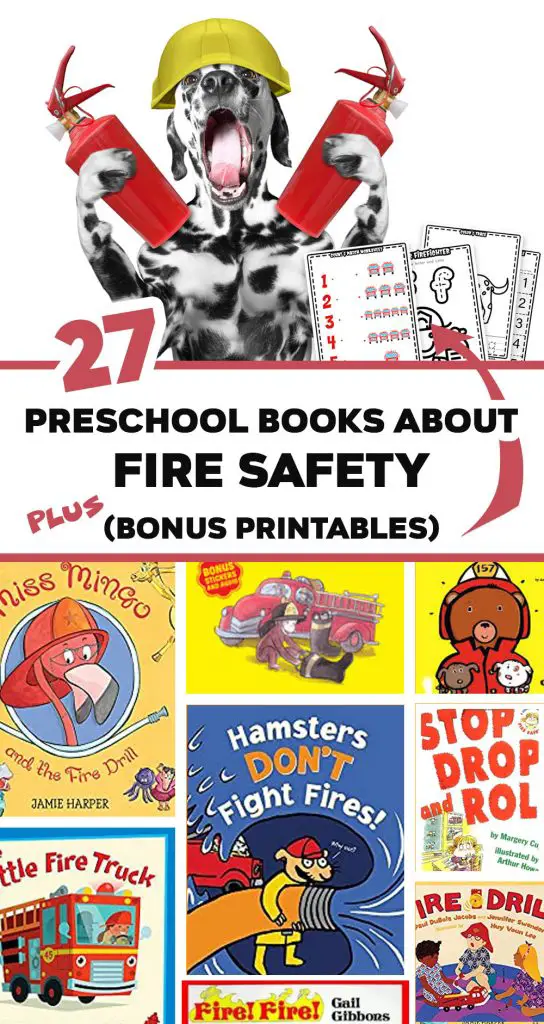
Children may need to be fully aware of the disaster that fire may bring. Teach them safety using these beautiful books to help them understand the dangers and steps to take when a fire occurs.
Reading these books will help increase children’s vocabulary and expose them to story structures. It will help build their comprehension skills and help them gain essential knowledge about fire safety.
As they read the books, they will learn more about various emergencies and how professionals are trained to help respond to this kind of situation.
These books will teach them to connect with some fire safety elements, like the sound of fire alarms.
Identifying and understanding what these sounds mean will help keep them alert, and they will be less likely to panic during an emergency.
They will also learn practical steps to escape a deadly situation by identifying fire hazards and learning the stop, drop, and roll exercises.
For this activity, you will need:
- Any of the fire safety books on the list
For more information on this activity, go to PreschoolHomeActivities.com.
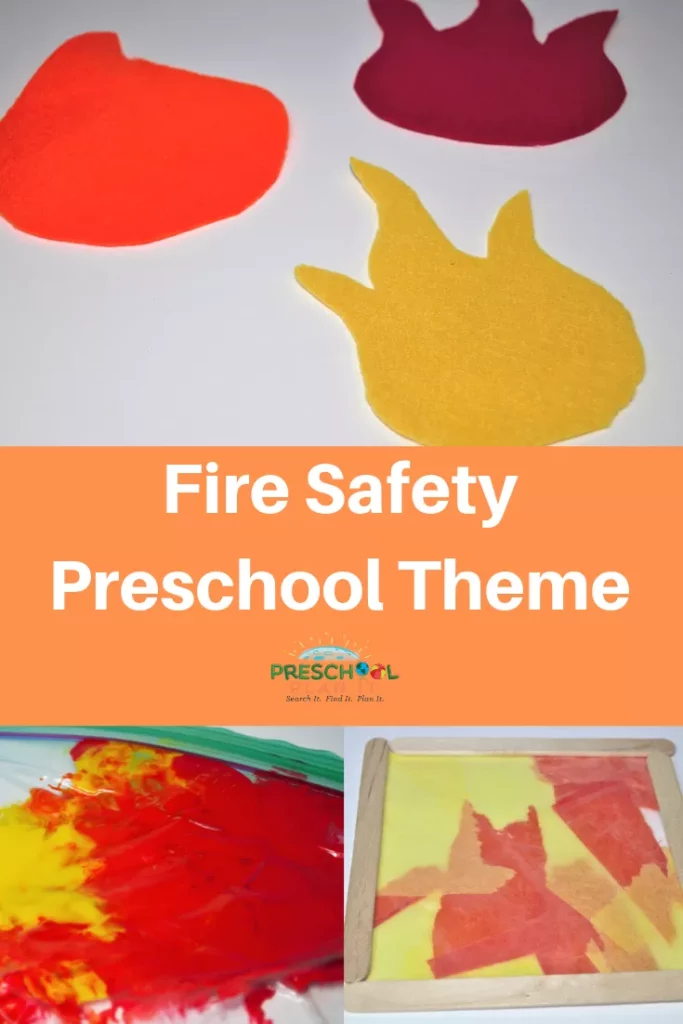
A perfect time for fire safety discussions is during circle time. It is the moment when children are still focused and active in providing their ideas and opinions.
This activity will help children identify the different types of fires and be able to classify if they are dangerous or not. It helps explain that fires can be helpful but only sometimes harmful.
These discussions will help build oral language and critical thinking skills.
Prepare different pictures of fires, such as fires from firepits, burning candles, fireworks, fireplaces, forest fires, etc. Write “Fire Safety” on the top of a chart paper.
Show children the different pictures and ask them to name these fires, then discuss how these may have started. Help children determine the purpose of the fires and let them figure out whether these are helpful or harmful to people.
For example, a fire on the stove helps cook food.
For this activity, you will need:
- Pictures of different fires
- Large chart paper
For more information on this activity, go to Preschool-Plan-It.com.
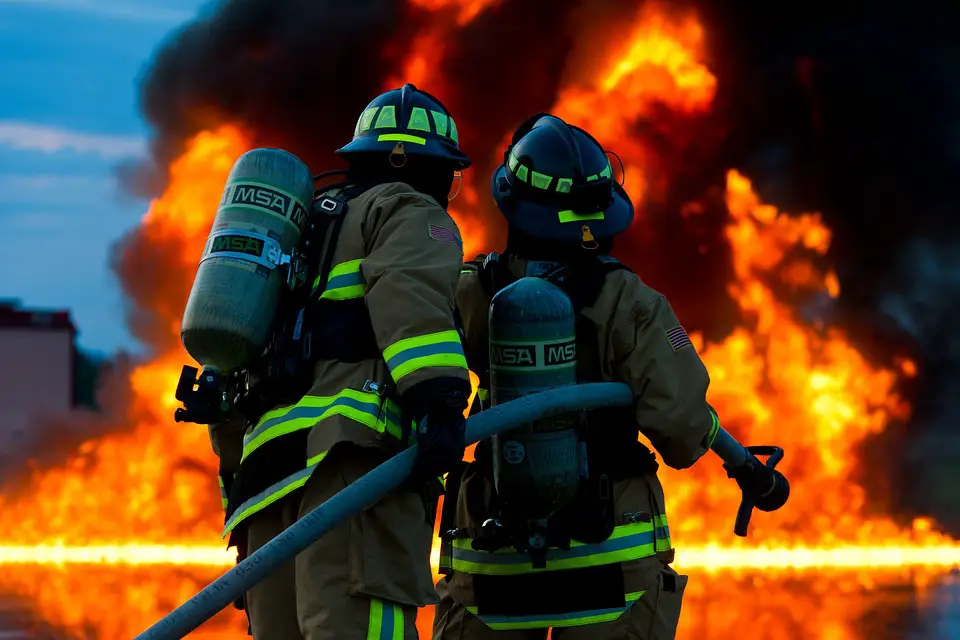
An excellent way for children to remember safety tips and not panic when a fire emergency happens is to teach them fire safety songs. The site lists ten fire safety songs that children will love.
Some songs teach children “Stop, Drop, and Roll.” These songs are helpful tools to help children remember the steps during fire drills. These will help improve children’s listening skills and following directions.
These songs also teach children to pay attention to their surroundings to find a way out of danger. It also reminds them to seek help, look for an adult, and never hide.
Children are taught to think critically and make sound judgments when a fire arises. It informs them to go to a designated location that is deemed safe when an emergency happens.
It asks them not to return to a burning structure and let the professionals do their job. Incorporate these ideas in the next fire drill.
For this activity, you will need:
- Any of the fire safety songs on the list
For more information on this activity, go to SongsForTeaching.com.
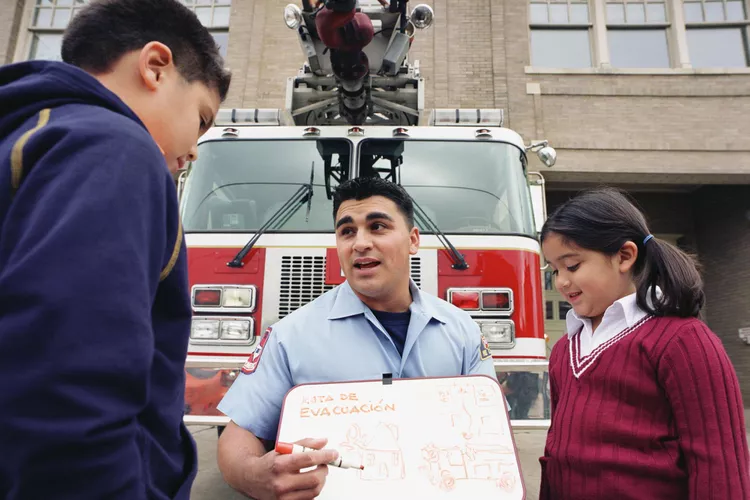
A field trip to the fire station will give children a glimpse into the lives of firefighters and how they respond to an emergency. It provides a beautiful sensory experience that books and pictures cannot replace.
Children will increase their vocabulary as they learn different names of the tools and equipment found in the fire station. They will be able to learn more about firefighter’s other responsibilities besides putting out fires.
Engaging with these first responders is an excellent social-emotional experience for children.
The site suggests setting up a schedule with the fire station as part of the fire safety unit study. Ask children to listen intently as the firefighters explain their job and equipment. This will help enhance their focus and listening skills.
Have a discussion about their experience afterward. Ask children about their favorite part during the field trip to help them express themselves and develop their oral language skills.
For this activity, you will need:
- A visit to the fire station
For more information on this activity, go to VeryWellFamily.com.
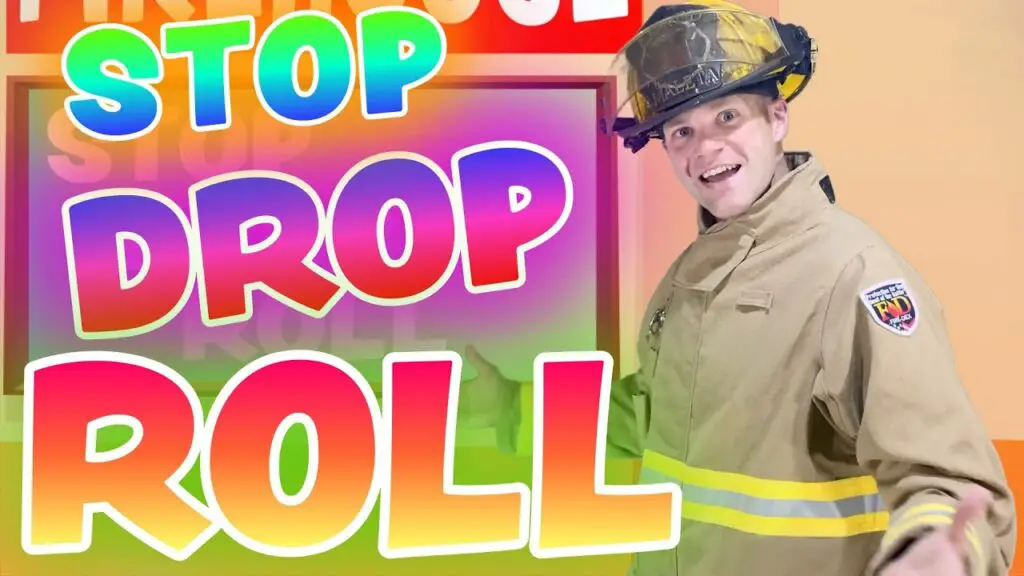
This educational video perfectly introduces the “Stop, Drop, and Roll” response that children should be aware of. It is crucial for children to learn these life-saving steps to prevent severe injury and panic.
The video will help children pay attention to details and improve their listening and body imitation skills. This is a perfect activity to practice during circle time or before a fire drill.
Have the children watch the video and explain why and when these steps are necessary. Turn this into a game to make it more exciting and fun. Call a child’s name and say, “Your clothes are on fire! What will you do?”
Let the children say each of the words “Stop, Drop, and Roll” as they perform the steps.
Role-play in the pretend play area and create an ongoing fire situation. Have the children take turns doing the “Stop, Drop, and Roll” as a practice.
For this activity, you will need:
- The instructional video
For more information on this activity, go to YouTube.com.
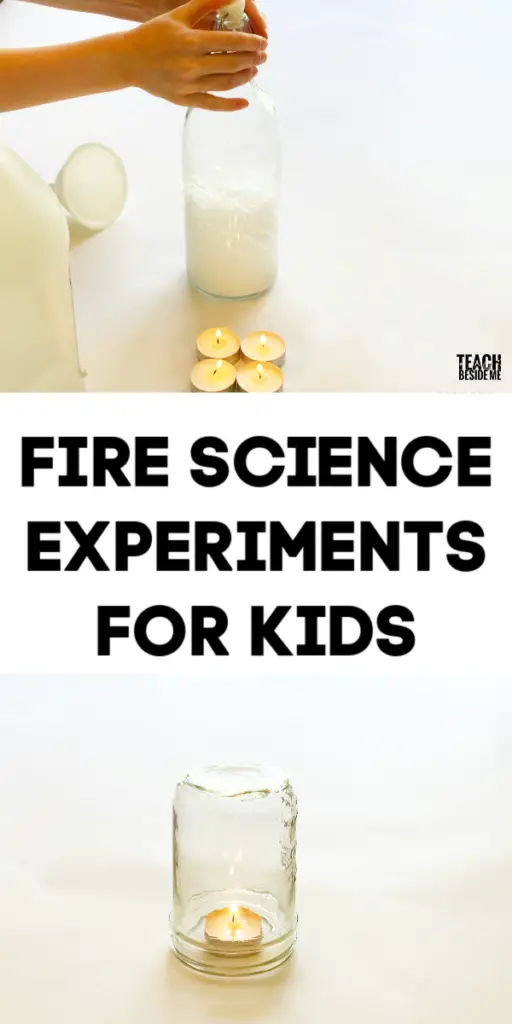
This experiment teaches children the principle behind how fire extinguishers effectively put out fires. With a lesson in science, explain how oxygen is required for a fire to flourish, and to counteract, it needs carbon dioxide.
This hands-on activity provides a wonderful sensory experience and will help improve children’s observation skills. They will also learn to follow oral instructions and enhance their listening skills.
Have the children place the funnel in the bottle. Ask them to put three tablespoons of baking soda and pour half a cup of vinegar. Have them place the lid quickly and let them observe what happens inside the bottle.
Light the tea light candles. Ensure that the children will not get ahold of the matches. Explain the next step to the children and ask them to guess what will happen.
When the bubbling effect inside the bottle has ceased, carefully turn the bottle towards the candles and remove the lid to release the gas.
For this activity, you will need:
- Tea light candles
- Baking soda
- Vinegar
- Matches
- Funnel
- A bottle with a lid
- Measuring cups and spoons
For more information on this activity, go to TeachBesideMe.com.
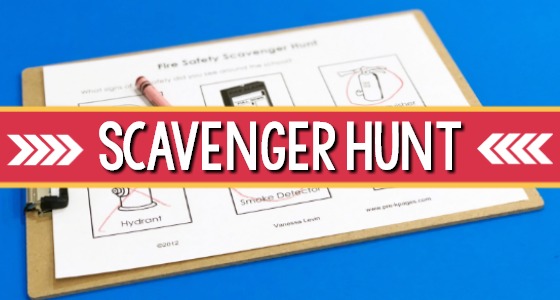
Here’s a wonderful game that will get children excited. This fire safety scavenger hunt will allow children to identify essential tools that will help prevent fires. Looking for these objects will help improve their scanning ability and observation skills.
Knowing what these objects are and their functions will help increase their vocabulary. Crossing out the pictures will help build their fine motor skills.
This activity can be done individually or in a group. This will help develop independence and teamwork.
The site suggests letting children count the number of fire safety tools they can find in an area to practice their counting skills. Let them also look for fire hazards and record their findings on chart paper.
Download and print the free scavenger hunt activity sheet from the site. Place it on a clipboard and provide a crayon. Have them look for the pictures in the list and let them cross this out once they find them.
For this activity, you will need:
- Printed scavenger hunt activity sheet
- Clipboard
- Crayon or marker
For more information on this activity, go to Pre-KPages.com.

Understanding which objects are safe to touch will help prevent accidents like burns. It may also help prevent a fire from happening.
Choosing and sorting pictures will help children to think critically, pay attention to details, and improve their fine motor skills.
The site provides a link to download the activity sheet. Download and print these and ask the children to cut out the pictures. Explain the two columns and ask them to sort the pictures where they think fit best. Let them use glue to stick the pictures.
Have a discussion about the reasons why each of the pictures belongs in the group they placed it in. Draw from their experiences about their family’s house rules when a hot object is present.
Discuss the need to be careful to prevent accidents and how these can start a fire if improperly used. Doing this will help build children’s oral language skills.
For this activity, you will need:
- Printed activity sheet
- Scissors
- Glue
For more information on this activity, go to TeachingMama.org.
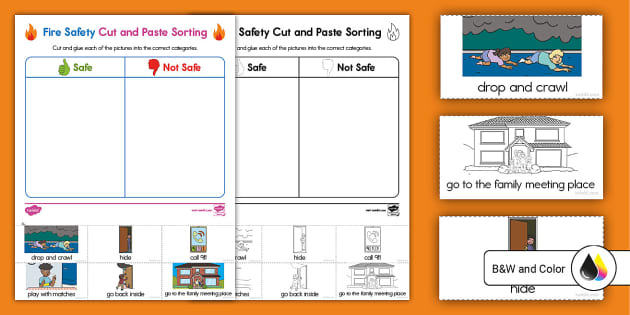
This activity sheet teaches children to identify what is safe and not safe when a fire breaks out. It teaches children critical thinking skills and will help improve their fine motor skills.
This cut-and-paste activity is a simple task, even for young children. With a lesson on safety, discuss which choices are the right things to do when there is a fire.
Help children explain the reasons behind the safe and not safe choices. Doing this will help improve their reasoning skills, understand cause and effect, and raise safety awareness.
Download and print the fire safety activity sheet from the site. This comes in black and white and colored. Ask children to look at the pictures at the bottom and have them cut this out.
Ask them to glue the pictures on the correct column. Have them explain why the pictures belong there and let them color these once they are finished.
For this activity, you will need:
- Printed activity sheet
- Scissors
- Glue
For more information on this activity, go to Twinkl.jp.
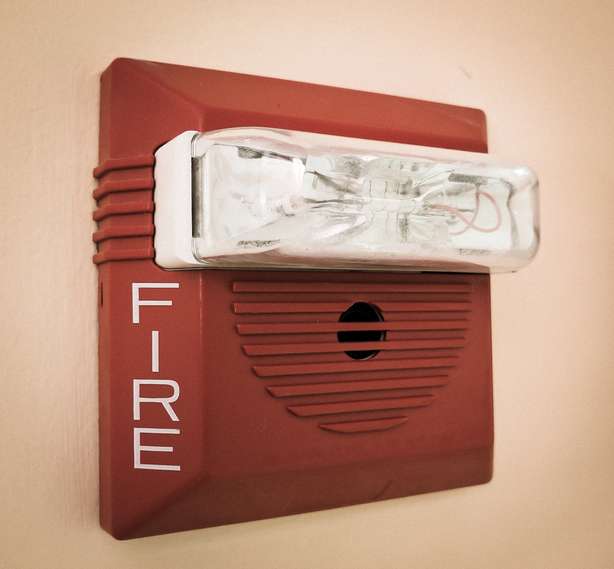
The emergency hotline 911 is one of the essential numbers that children should remember.
There are several essential ideas that children need to understand aside from the number. First, help children understand what is considered an emergency. Use pictures and videos for this step.
This will help children learn to think critically by differentiating which situations are worth calling the hotline and which are not.
Next, teach children about the use of phones. This is great practice for number recognition and fine motor skills. Ask them to take turns in pressing the right buttons. Let them practice on different types of phones.
Help the children remember their home addresses. This will make respondents get to the area quicker.
Finally, help children in conversing with the operator. In pretend play area, have them role-play how to ask for help and describe the situation. Teach them to listen carefully to the operator’s instructions and to respond well.
For this activity, you will need:
- Phones
For more information on this activity, go to DKIServices.com.
Conclusion
These fire safety activities are perfect for the fire safety unit study. It will help children understand the need to protect themselves by equipping them with the proper knowledge to prevent a fire-related accident or disaster.
What they learn from these activities may save others’ lives. Thank you for reading. Come back and check out our other activity articles soon.




